Multiply a 2-digit by a 1-digit number | Year 3 Mathematics PDF Download
Mental method for multiplication
One method involves breaking down numbers mentally. For instance:
Example: Consider the calculation: What is 6 x 40?
Ans: 6 x 40 equals 6 x 4 x 10
Firstly, calculate 6 x 4, which equals 24
Next, multiply 24 by 10. When you multiply by 10, all digits shift one place to the left, adding a zero to represent the increased value:
24 x 10 = 240
Written Methods for Multiplication
- In mathematics, when multiplying a 2-digit number by a 1-digit number, using a written method known as short multiplication can often simplify the process.
- This method, also called short multiplication, aids in organizing the multiplication steps effectively.
Solved Examples
Example 1: Beverley ordered 8 packets of balloons. Each packet contained 52 balloons. How many balloons has she got in total? Sol: The equation we are working out is:
Sol: The equation we are working out is:
52 x 8
First, set the multiplication out correctly: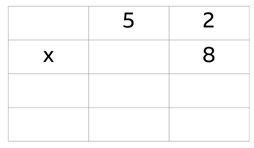
Step 1: Now the multiplication is set out correctly, you can solve the multiplication in the ones column.
2 x 8 = 16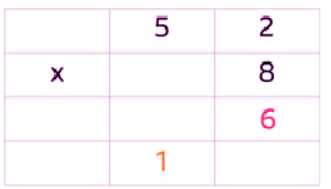 Remember to carry the 1 into the tens column.
Remember to carry the 1 into the tens column.
Step 2: Now it's time to work out 50 x 8
50 x 8 = 400
Don’t forget about the ten you carried over: 400 + 10 = 410.
52 x 8 = 416
Beverley now has 416 balloons.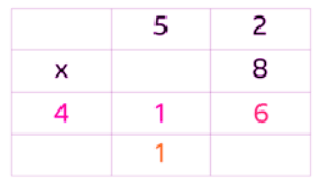
Example 2: What is 48 x 6?
Sol: When you set out short multiplication, it is important to make sure the place value of the digits are in the correct place.
Put the 4 in the tens column and the 8 in the ones column.
Like this: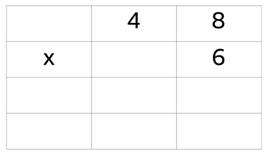
Step 1: Just like when you solve column addition and subtraction, you start with the digits in the ones.
8 x 6 = 48
Since 48 is 4 tens and 8 ones, you have to remember to keep the place values in the correct column. The 8 stays in the ones column, while you carry the 4 into the tens column.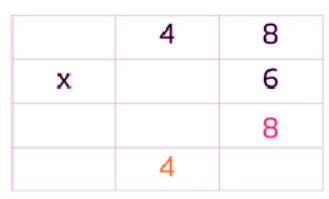
Step 2: Time to work out 40 x 6 now.
40 x 6 = 240
But you can’t forget about the 4 tens that you carried over - you need to remember to add that on to the answer.
240 + 40 = 280
Again, make sure everything is in the correct place value column.
48 x 6 = 288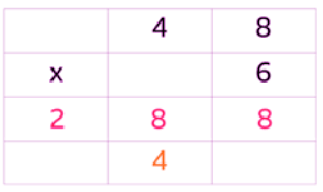
|
69 videos|67 docs|11 tests
|
FAQs on Multiply a 2-digit by a 1-digit number - Year 3 Mathematics
| 1. What is the process for dividing up to 4 digits by 1 digit? |  |
| 2. How can you multiply a 2-digit number by a 1-digit number? |  |
| 3. Why is it important to understand dividing and multiplying with multiple digits in mathematics? |  |
| 4. What are some common challenges students face when learning to divide and multiply with multiple digits? |  |
| 5. How can students improve their skills in dividing up to 4 digits by 1 digit and multiplying a 2-digit by a 1-digit number? |  |

|
Explore Courses for Year 3 exam
|

|
















